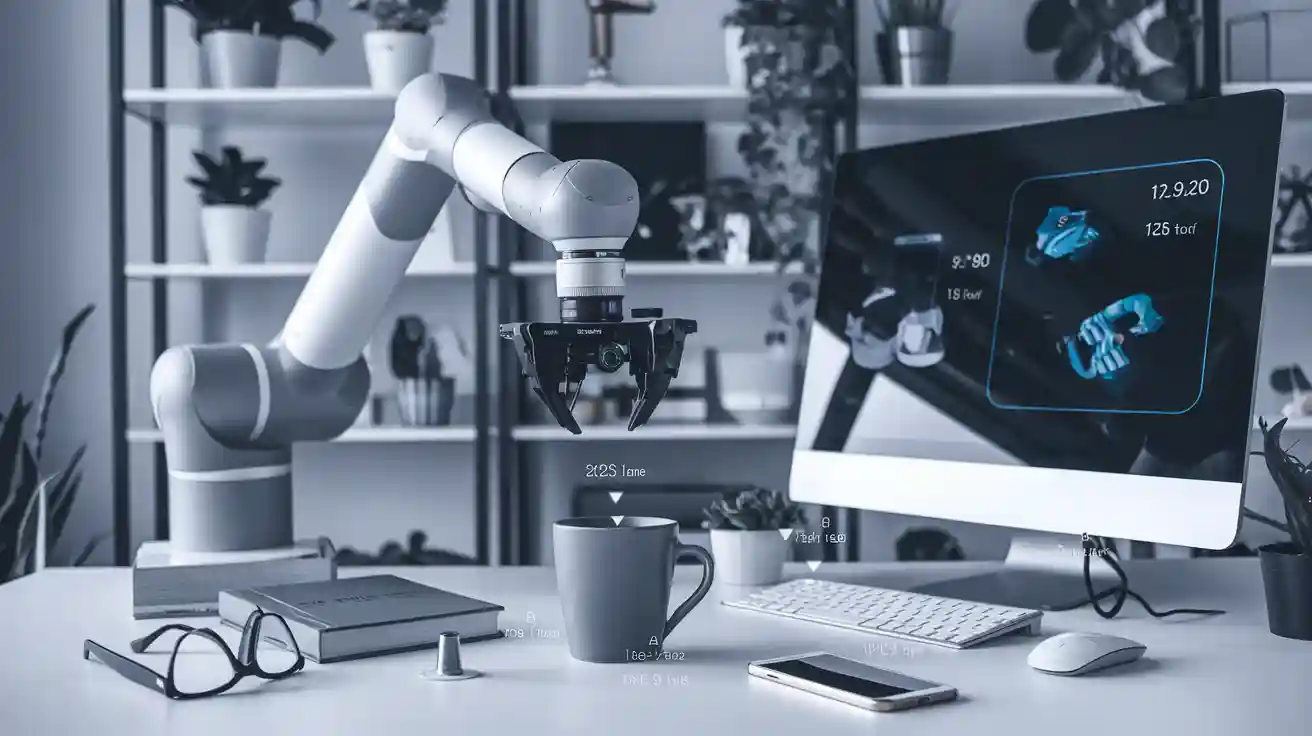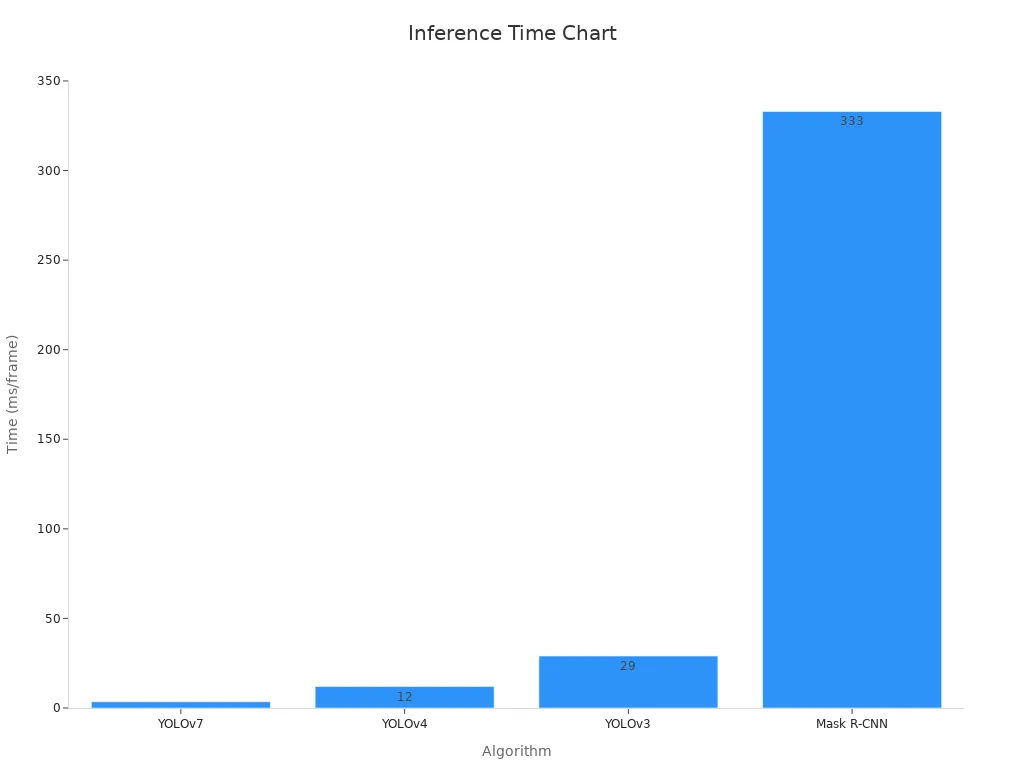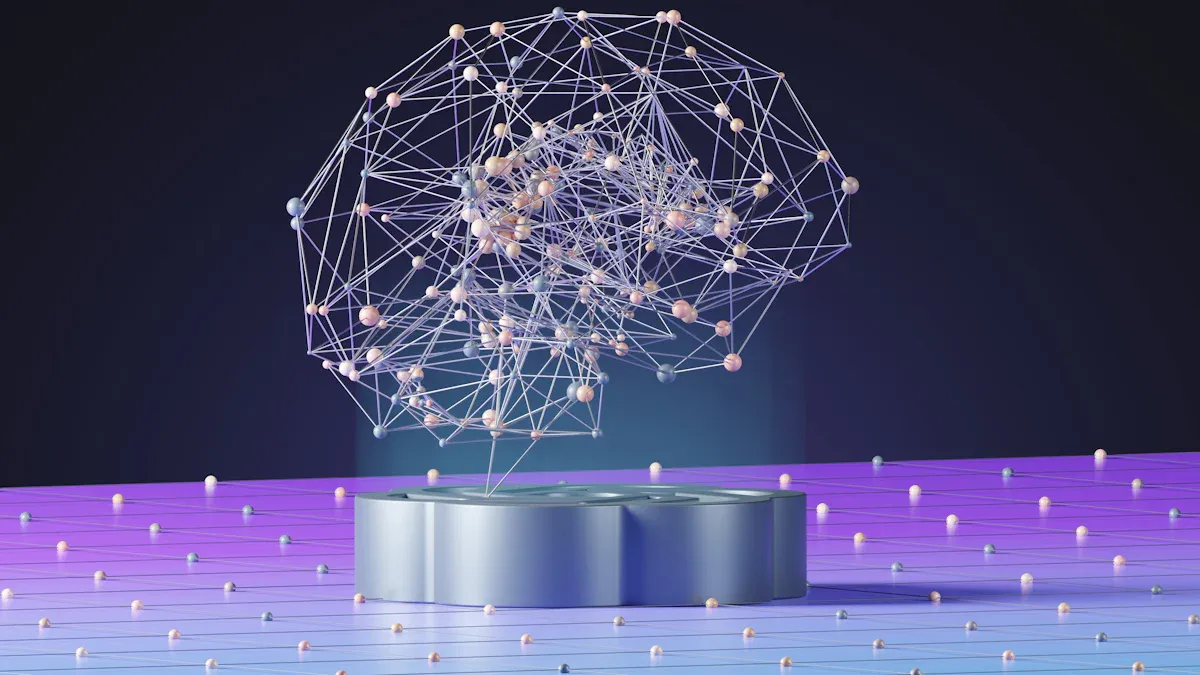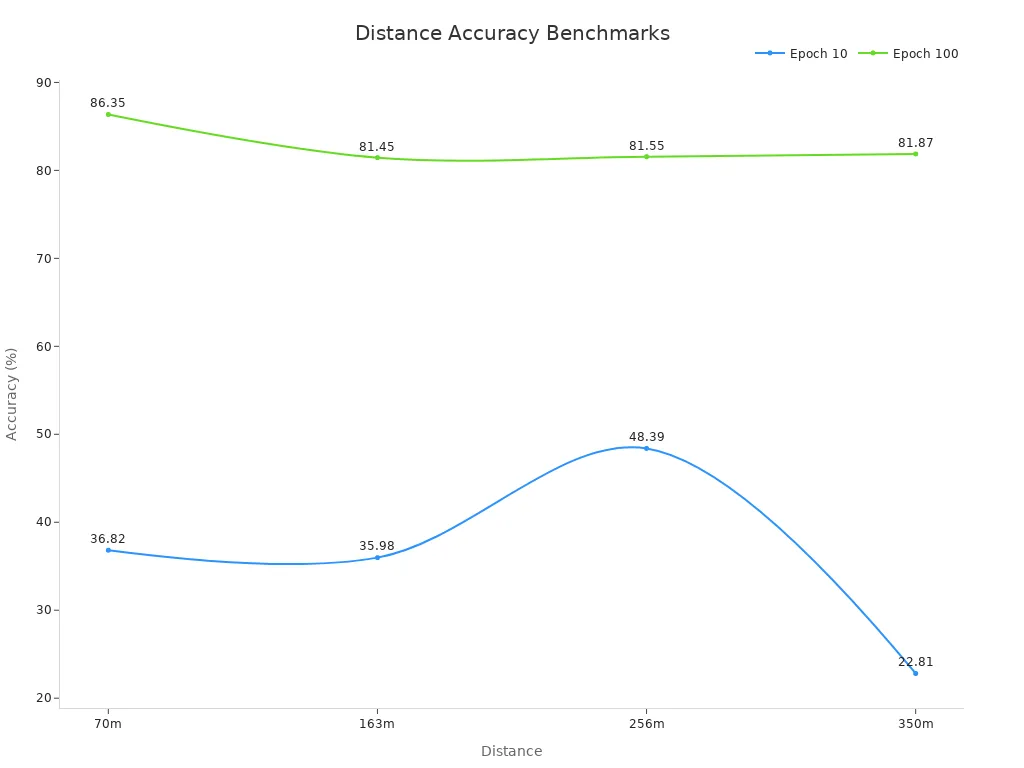How Object Recognition Powers Modern Machine Vision Systems

Object recognition transforms how machines interact with visual data, making processes faster and smarter. It enables automated systems to detect, classify, and analyze objects with high precision. For instance:
- Automated quality checks on production lines use object recognition to detect defects and sort products without human involvement.
- Machine vision systems powered by AI adapt to new conditions, driving innovation in industries like manufacturing and healthcare.
The combination of robotics and machine vision creates intelligent systems capable of performing complex tasks with minimal supervision. This synergy boosts productivity and flexibility while reducing human error.
The rapid growth of machine vision systems highlights their impact. Industries such as automotive and retail increasingly adopt these technologies for real-time monitoring, safety, and efficiency. As hardware costs decrease, object recognition machine vision systems become accessible to more businesses, unlocking opportunities across diverse fields.
Key Takeaways
- Object recognition helps machines find and sort objects, improving automation in areas like factories and hospitals.
- Adding object recognition to machine vision systems makes work faster, more accurate, and lowers mistakes in jobs like checking quality and managing supplies.
- Spotting objects instantly helps make quick decisions, which is important for stores and security, so businesses can act fast when things change.
- Deep learning and neural networks are key to making object recognition better, helping systems learn from data and get more accurate over time.
- Solving ethical and privacy issues is important to use object recognition responsibly, building trust and fairness when using these technologies.
Understanding Object Recognition in Machine Vision Systems
What Is Object Recognition?
Object recognition is the ability of machines to identify and classify objects within images or videos. This process relies on artificial intelligence to analyze visual data and match it to predefined parameters. For example, facial recognition software on smartphones compares a stored image of your face with a live image to unlock the device.
The technology behind object recognition uses advanced algorithms to detect, recognize, and label objects. Machine learning and deep learning techniques play a significant role in improving accuracy. Deep convolutional neural networks (DCNNs), for instance, mimic how humans process visual information. Research shows that while humans and DCNNs differ in how they prioritize spatial details, some networks, like vNet, closely resemble human recognition patterns when identifying animate objects.
Key characteristics of object recognition include:
- The ability to detect objects in complex environments.
- The use of deep learning to improve recognition accuracy over time.
- The capability to process large datasets for better performance.
This technology forms the foundation of many modern applications, from autonomous vehicles to medical imaging. It enables machines to "see" and make decisions based on what they observe, transforming industries worldwide.
How Object Recognition Relates to Machine Vision
Object recognition is a critical component of machine vision systems. While machine vision focuses on capturing and processing visual data, object recognition adds the ability to interpret and understand that data. Together, they create systems capable of performing tasks like object detection, classification, and tracking.
For example, in manufacturing, machine vision systems equipped with object recognition technology can identify defective products on an assembly line. This combination ensures higher quality control and reduces waste. Similarly, in retail, these systems help track inventory by recognizing and counting items on shelves.
Comparative studies of object detection algorithms, such as those using the Microsoft COCO dataset, highlight how different approaches perform under various conditions. These analyses reveal the strengths and weaknesses of each algorithm, helping developers choose the best fit for specific applications.
By integrating object recognition with broader machine vision systems, industries can achieve greater efficiency and accuracy. This synergy allows machines to perform tasks that once required human intervention, paving the way for smarter automation.
Technologies Behind Object Recognition Machine Vision Systems
Deep Learning and Neural Networks
Deep learning has revolutionized object recognition technology by enabling machines to learn from vast amounts of data. Neural networks, particularly deep convolutional neural networks (DCNNs), form the backbone of many object detection models. These networks mimic how the human brain processes visual information, allowing machines to identify patterns and features in images.
For example, DCNNs excel in tasks like image classification and object detection. They analyze images by breaking them into smaller parts, identifying edges, shapes, and textures. This layered approach improves accuracy, especially in complex environments. Advances in artificial intelligence have further enhanced these models, making them faster and more reliable for real-world applications.
You can see deep learning in action in computer vision applications like facial recognition or autonomous vehicles. These systems rely on neural networks to process visual data in real time, enabling quick and accurate decision-making.
Template Matching Techniques
Template matching is a straightforward yet powerful method in object recognition machine vision systems. It involves comparing a predefined template of an object with the visual data captured by the system. This technique works well for tasks requiring high precision, such as detecting specific shapes or patterns.
The process begins by creating a template, often a grayscale image of the object. The system then scans the input image to find areas that closely match the template. While this method is simple, it performs best in controlled environments where lighting and object orientation remain consistent.
Template matching is widely used in industrial settings for quality control. For instance, it helps identify defective products by comparing them to a perfect template. Although it lacks the adaptability of deep learning models, its speed and simplicity make it a valuable tool for specific applications.
Shape-Based Recognition Methods
Shape-based recognition methods focus on identifying objects based on their geometric features. Unlike template matching, these methods excel in dynamic environments where objects may rotate, scale, or partially occlude. They are particularly effective in 3D object detection and classification.
Key advantages of shape-based recognition include:
- Subpixel-precise results, even with object rotation or scaling.
- Reliable identification of 3D objects using CAD models.
- Enhanced speed and robustness through innovations like Deep 3D Matching.
These methods play a crucial role in industrial machine vision systems. For example, they determine the position and orientation of flat object parts in 3D space, ensuring precise assembly in manufacturing. Their ability to adapt to complex scenarios makes them indispensable in modern computer vision applications.
Integration of Object Recognition in Machine Vision Systems
Key Hardware Components
The hardware forms the backbone of any object recognition machine vision system. It includes cameras, processors, and storage devices that work together to capture and analyze visual data. High-resolution cameras ensure that the system captures detailed images, which are essential for accurate recognition and classification. Processors, such as GPUs and TPUs, handle the computational demands of running complex algorithms.
Benchmark tests highlight the performance of these components under various conditions. For example:
| Test Condition | Classification Accuracy | Notes |
|---|---|---|
| Clean test images (24 object db) | 97% | High accuracy in forced choice experiments. |
| 75% clutter, 25% occlusion | 90%+ | Performance remains robust despite significant clutter and occlusion. |
| Generic recognition experiment | N/A | System trained on multiple objects and classes, demonstrating versatility in classification. |
| Local feature extraction | N/A | Use of distinctive local features enhances robustness against occlusion and clutter. |
| Multi-modal recognition capability | N/A | System can combine evidence from different types of features effectively. |
These results demonstrate the importance of selecting the right hardware for specific applications. For instance, in defect detection on production lines, high-speed cameras and robust processors ensure real-time performance without compromising accuracy.
Software Frameworks and Algorithms
Software frameworks and algorithms are the brains behind machine vision systems. They enable the system to process visual data, identify patterns, and make decisions. Popular frameworks like ImageAI, GluonCV, and Detectron2 provide tools for tasks such as image classification, object detection, and custom model training. Here's a comparison of some widely used frameworks:
| Library | Description | Key Features |
|---|---|---|
| ImageAI | A library for computer vision algorithms and deep learning methodologies. | Supports image recognition, video detection, and custom training. |
| GluonCV | A framework with state-of-the-art implementations for deep learning. | Offers image classification, object detection, and access to a Model Zoo. |
| Detectron2 | A next-generation library by Facebook for object detection. | Supports high-quality algorithms like DensePose and Mask R-CNN, and allows custom model training. |
| YOLOv3_TensorFlow | An implementation of the YOLO architecture for object detection. | Provides fast GPU computations and effective results for real-time detection. |
| Darkflow | A translation of the darknet framework for Python and TensorFlow. | Supports YOLO models, real-time detection, and custom dataset training. |
These frameworks rely on advanced algorithms to achieve high performance. For example, YOLO (You Only Look Once) models are known for their speed and efficiency in real-time applications. The table below compares the performance of various object detection algorithms:
| Algorithm | Average Precision (AP) | Inference Time (ms/frame) | FPS |
|---|---|---|---|
| YOLOv7 | Best | 3.5 | 286 |
| YOLOv4 | 12 | ||
| YOLOv3 | 29 | ||
| Mask R-CNN | 333 | ||
| YOLOv5 | N/A |

By leveraging these frameworks and algorithms, you can build systems that excel in tasks like defect detection, inventory management, and autonomous navigation.
Real-Time Object Detection and Counting
Real-time capabilities are crucial for many machine vision applications. Systems that can detect and count objects in real time enable faster decision-making and improved efficiency. For example, a real-time people counting system achieves 100% accuracy under ideal conditions and maintains 98.42% accuracy in challenging scenarios. This level of performance demonstrates the system's reliability in dynamic environments.
Real-time object detection and counting rely on a combination of high-speed hardware and optimized algorithms. YOLO models, known for their speed, are often used in these applications. They process images at a rate of hundreds of frames per second, ensuring that the system can keep up with fast-moving objects. This capability is essential in industries like retail, where real-time inventory tracking helps businesses respond quickly to changes in demand.
By integrating real-time features into your machine vision system, you can unlock new possibilities for automation and efficiency. Whether you're monitoring a production line or managing a warehouse, real-time object detection and counting provide the tools you need to stay ahead.
Applications of Object Recognition in Machine Vision Systems

Healthcare: Medical Imaging and Diagnostics
Object recognition plays a vital role in healthcare, especially in medical imaging and diagnostics. You can see its impact in applications like tumor detection, organ segmentation, and disease classification. AI-powered image analysis software processes medical scans to identify abnormalities with high accuracy. For example, algorithms trained on large datasets can detect cancerous cells in X-rays or MRIs faster than traditional methods.
Machine vision systems equipped with object detection models improve diagnostic precision. They analyze complex medical images in real-time, helping doctors make informed decisions. These systems also reduce human error, ensuring consistent results across different cases. By integrating object recognition into healthcare workflows, you enhance patient outcomes and streamline diagnostic processes.
Automotive: Autonomous Vehicles and Driver Assistance
In the automotive industry, object recognition is the backbone of autonomous vehicles and advanced driver assistance systems (ADAS). These systems rely on object detection algorithms to identify pedestrians, vehicles, and road signs. ADAS features like collision avoidance and adaptive cruise control use real-time data from sensors and cameras to make split-second decisions.
Safety standards such as ISO 26262 and ISO 21448 ensure the reliability of these systems. Automated testing and static code analysis maintain software quality, minimizing risks during operation. Object recognition machine vision systems enable vehicles to navigate safely, even in complex environments. This technology not only enhances road safety but also paves the way for fully autonomous transportation.
Retail: Inventory Management and Customer Insights
Retail businesses use object recognition to optimize inventory management and gain customer insights. Machine vision systems equipped with object detection applications track products on shelves, ensuring accurate stock levels. Real-time object detection and counting help you respond quickly to changes in demand, reducing stockouts and overstocking.
Object recognition also improves customer experience. For instance, AI-powered systems analyze shopper behavior, identifying popular products and optimizing store layouts. These insights drive better marketing strategies and increase sales. By leveraging object recognition, you can transform retail operations, making them more efficient and customer-focused.
Security: Surveillance and Threat Detection
Object recognition has revolutionized security by enhancing surveillance and threat detection systems. These systems use AI to analyze video surveillance footage, identify potential threats, and respond in real time. You can rely on this technology to improve safety in public spaces, workplaces, and even residential areas.
One of the most impactful applications of object recognition in security is pedestrian detection. This feature allows systems to identify individuals in crowded environments, ensuring better monitoring and safety. For example, airports and train stations use these systems to track suspicious behavior or locate missing persons. By analyzing patterns and movements, object recognition helps prevent incidents before they occur.
The effectiveness of these systems is backed by impressive performance metrics. For instance, the DeepGuard model achieves 99.00% accuracy and 98.63% precision in identifying threats. These high-performance levels ensure reliable detection, even in complex environments.
| Model | Performance Metric | Value |
|---|---|---|
| DeepGuard | Accuracy | 99.00% |
| DeepGuard | Precision | 98.63% |
Video surveillance systems equipped with object recognition also reduce the workload for security personnel. Instead of manually monitoring hours of footage, you can use these systems to flag unusual activities automatically. This not only saves time but also ensures that no critical event goes unnoticed.
By integrating AI-powered object recognition into your security infrastructure, you enhance both efficiency and reliability. Whether it’s monitoring a busy street or securing a private property, this technology provides a robust solution for modern security challenges.
Challenges and Limitations of Object Recognition
Computational Demands and Resource Constraints
Object recognition systems require significant computational power and resources. You need to consider factors like memory, CPU, and power when deploying these systems. Initial assessments often evaluate hardware capabilities against the demands of object recognition algorithms. Techniques like quantization and pruning help optimize models, reducing resource usage without sacrificing accuracy.
Testing methodologies play a crucial role in identifying performance trade-offs. For example:
- Resource Constraints: Systems often face limitations in memory and processing power.
- Efficiency Techniques: Methods like model compression improve performance.
- Benchmarking: Profiling systems reveals optimization opportunities.
- Model Size vs. Accuracy: Smaller models may compromise precision.
Helpful tools like TensorFlow Lite and ONNX aid in optimizing object recognition systems for resource-constrained environments. By balancing performance and resource usage, you can deploy systems effectively across various applications.
Accuracy in Complex Environments
Object recognition systems struggle with accuracy in challenging conditions. Factors like weather, lighting, and object distance affect performance. Experimental benchmarks highlight these challenges:
| Epochs | Subset | rain | no rain |
|---|---|---|---|
| 10 | Air | 48.84% | 58.11% |
| 100 | Air | 80.72% | 77.77% |
| 10 | Ground | 56.28% | 43.73% |
| 100 | Ground | 85.97% | 85.33% |
Accuracy also varies with object distance:
| Epochs | 70m | 163m | 256m | 350m |
|---|---|---|---|---|
| 10 | 36.82% | 35.98% | 48.39% | 22.81% |
| 100 | 86.35% | 81.45% | 81.55% | 81.87% |

These results demonstrate the need for robust algorithms that adapt to environmental changes. By improving training datasets and leveraging advanced ai techniques, you can enhance system accuracy in real-world scenarios.
Ethical and Privacy Concerns
Object recognition technologies raise ethical and privacy concerns. Biometric systems, including facial recognition, often collect sensitive data, posing risks to individual privacy. Ethical frameworks aim to balance the benefits of these technologies with their potential to infringe on personal dignity.
Academics advocate for less intrusive alternatives to biometric data collection. For example, object recognition systems can reduce privacy risks by avoiding direct identification of individuals. Regulatory guidelines emphasize transparency and accountability in data usage, ensuring ethical deployment of these systems.
By addressing these concerns, you can build trust and ensure responsible use of object recognition technologies. Exploring privacy-preserving methods, such as anonymized data processing, helps mitigate risks while maintaining system effectiveness.
Object recognition stands as a cornerstone of modern machine vision systems, driving advancements in automation and decision-making. Its integration into industries like manufacturing, healthcare, and retail has transformed processes, improving efficiency and accuracy. For example, advancements in optical systems and deep learning methodologies have enhanced defect detection across sectors such as automotive and pharmaceuticals.
| Key Aspects | Description |
|---|---|
| Focus Area | Advancements in Machine Vision Systems (MVS) for smart manufacturing and industrial quality control |
| Methodologies | Optical systems, image acquisition techniques, deep learning methodologies |
| Impact | Enhanced accuracy, speed, and versatility in defect detection |
| Applications | Automotive, electronics, food and beverage, pharmaceutical, textile industries |
| Future Trends | Identifies research gaps and future directions in machine vision and image processing |
Looking ahead, innovations like edge computing and AI-enhanced vision models promise smarter, more efficient systems. These technologies enable real-time data processing and accurate visual interpretation, essential for applications like autonomous driving. The market for AI-powered vision models is projected to reach $45.7 billion by 2028, highlighting their growing importance.
| Trend/Innovation | Description | Market Projection |
|---|---|---|
| Edge Computing | Enables real-time data processing at the source, reducing latency. | Essential for applications like autonomous driving. |
| AI-enhanced Vision Models | Utilizes deep learning and CNNs for accurate visual data interpretation. | Market size expected to reach $45.7 billion by 2028. |
| Generative AI | Creates synthetic images for various sectors, enhancing data availability. | 76% usage trend in 2023 according to AI Accelerator Institute. |
While challenges like computational demands and ethical concerns persist, ongoing innovations in AI and hardware continue to address these issues. The potential for object recognition to revolutionize industries remains immense, paving the way for transformative applications that redefine how machines interact with the world.
FAQ
What is the difference between object detection and object recognition?
Object detection identifies the location of objects in an image, while object recognition classifies and labels those objects. For example, detection finds a car in a photo, and recognition identifies it as a "sedan" or "SUV."
How does object recognition improve automation?
Object recognition allows machines to interpret visual data and make decisions. This capability automates tasks like quality control, inventory tracking, and navigation. By reducing human involvement, you can achieve faster and more accurate results.
Can object recognition work in low-light conditions?
Yes, but performance depends on the system's design. Infrared cameras and advanced algorithms improve recognition in low-light environments. These tools help systems adapt to challenging conditions, ensuring reliable results.
What industries benefit most from object recognition?
Industries like healthcare, automotive, retail, and security benefit greatly. For example, it enhances medical imaging, powers autonomous vehicles, tracks inventory, and improves surveillance systems. Its versatility makes it valuable across many fields.
Is object recognition technology expensive to implement?
Costs vary based on the system's complexity and scale. Advances in hardware and open-source software have made object recognition more affordable. Small businesses can now access these technologies without significant investment.
See Also
Exploring Object Detection Techniques In Today's Vision Systems
The Role Of Character Recognition In Advanced Vision Systems
The Importance Of Feature Extraction In Vision Technologies
